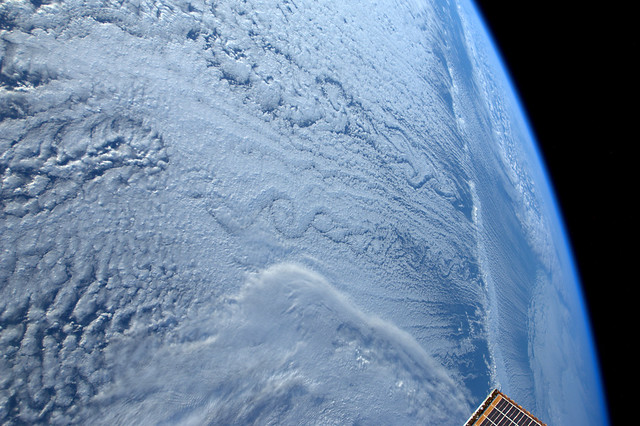Image credit
When air flows around a blunt object at low speed it has an easy enough time splitting in two and flowing around the windward side, but linking back up on the leeward side is tricky. Often an instability results, and vorticies of opposing direction alternately curl and shed into the flow on either side of the obstruction. In the fluid dynamics world this is known as a von Karman vortex street, and you can read more about the physics and implications of this phenomenon here:
Karman vortex street
Theodore von Karman's name is almost ubiquitous on influential aerodynamics papers from the first half of the 20th Century. Since there's so much linked to von Karman's name already, I think adding his name to the phenomenon is unnecessary, but whatever, that's what the fluid physics community calls them. Vortex streets happen because air has a little bit of stickiness (more techincally viscosity), and because of this stickiness the faster flow on the sides of an obstruction tug on the decelerating air on the trailing side, sometimes gaining enough traction to yank it off and separate the flow completely. This creates a vortex that floats away on the wind.
Interestingly, while the dimensional and time scales of von Karman vortex shedding depend on the specifics of the size and shape of the object and the speed of the flow in which it's embedded, there's a remarkable space of possible vortex streets this allows. The streets can ripple from a bumblebee's wings or from mountain ranges, and can dissipate in a matter of milliseconds or endure for hours. Properly visualized in a wind tunnel or by cloud formations, it makes for a beautiful sight at the intersection of physics and instability either way.

No comments:
Post a Comment